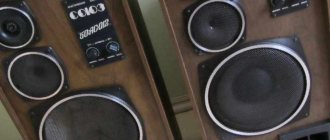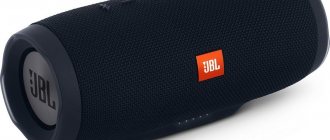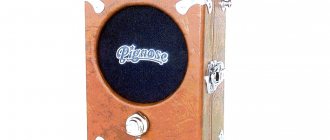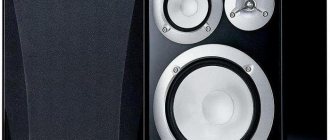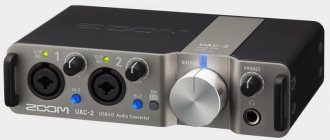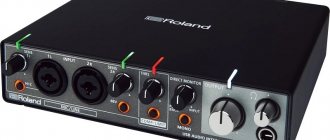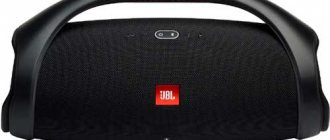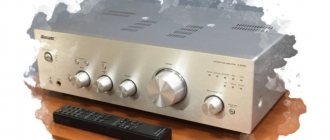Digital products occupy the lion's share of the audio equipment market. Manufacturers strive to offer more and more advanced and technologically advanced systems, elaborating every characteristic down to the smallest detail. But parallel to this process, a special niche for vintage radio technology is being formed. Representatives of this class have their own original appearance, not only externally, but also internally. It is wrong to think that this is equipment that only imitates “old” acoustics. A vintage audio system in the modern sense is also a technologically advanced product. Another thing is that it was developed on the traditional operating principles of models produced 20 or more years ago.
Features of vintage acoustics
If in the production of modern systems the most relevant areas of development are communication technologies and methods for optimizing signal transmission channels, then in the creation of vintage models, engineers focused on the design base. In particular, a lot of attention was paid to the manufacture of a paper diffuser, through which the acoustics reproduce sound. The vintage model involves the inclusion of this component, made using classical methods. Soviet radio factories, for example, used softwood rosin or nitrocellulose varnish when casting the diffuser. The same technological methods, but in a modernized form, are also used by some modern manufacturers.
Of course, external features also distinguish vintage equipment. As a rule, such equipment has a small number of analog interfaces, has impressive dimensions and a distinctive design. On the other hand, true connoisseurs of the segment are reluctant to accept the deliberate repetition of individual aesthetic shades with a reference to the past. Still, naturally designed acoustics are welcome, the vintage filling of which also fully reflects its strengths and weaknesses.
Proper retro
The Old School Music bookshelf speakers are notable not so much for their design, which is quite traditional, but for how exactly this classic two-way bookshelf speaker was implemented. Under the layer of natural veneer there is a body frame made of birch plywood, the cut of which can be seen on the facade. Inside, it is reinforced with partitions that increase rigidity.
Shelf classic as it is.
The side walls are damped from the inside with a layer of bitumen, and special acoustic foam supplied from Denmark is used as a sound absorber. If you open up any vintage speaker, you won't find anything like it inside. But this is an example of a proper departure from authenticity. Now the power is different, and the music has become more cheerful. Acoustic housings are simply forced to be as strong and acoustically inert as possible. And all this has a positive effect on the sound quality.
The veneer on the sidewalls has a similar pattern.
But the bass reflex is installed in the old fashioned way: without bells and other means of combating the notorious turbulence. It's just a tube, very similar in appearance to aluminum, built into the back wall. I won’t keep the intrigue, I’ll say right away that Old School Music doesn’t have overtones, noise, buzzing, prolonged notes and other problems with most bass reflex speakers (including those with super complex ports).
The tweeter in a small horn was developed by Morel specifically for Old School Music.
The front panel of the acoustics is slightly recessed into the body, which was practiced quite often in vintage acoustics. Against this background, the tweeter looks especially appropriate, the 25-mm dome of which is located in a rather deep horn design, directing the radiation forward and eliminating the possibility of refraction and re-reflection of sound waves at the protruding edges of the facade. This, as it turns out, is not a coincidence: the classic Morel CAT308H tweeter was modified by the manufacturer specifically for this model.
With a paper diffuser, a rubber surround and a “bullet” in the center,
the mid/bass driver of Old School Music has a size of 133 mm and is produced by the Wavecor factory, which employs the developers of the famous Scandinavian speakers Peerless, Vifa and ScanSpeak. The WF125CU12-01 speaker has a traditional paper cone, rubber surround and a machined phase-equalizing bullet mounted on a core.
The crossovers are assembled using audiophile components, and the luxurious WBT terminals allow one to judge the degree of audiophileness of the design as a whole.
The bass reflex device violates all modern canons: a metal pipe, and even without expansion at the output.
Special attention should be paid to the quality of assembly and finishing. Manufacturers of significantly more expensive speakers usually talk about manual assembly, specially trained specialists and other exclusivity. But even in the High End with exorbitant prices, it is not so common to find cases with such quality of veneer joints on the edges and with such precision in selecting it according to the pattern.
WBT terminals are quite expensive, but they are really very convenient and have a low mass of the contact part, which minimizes the impact on the sound.
The only thing that, in my opinion, does not emphasize the high cost of the model is the very affordable “walnut” color. Seeing the familiar grayish-brown hue and virtually identical pattern on the sides of the two speakers, I thought they were covered with high-quality matte vinyl. Only upon closer examination and tactile sensations can one understand that this is a perfectly processed polished veneer.
Main characteristics
Nominal technical and operational indicators differ little from today's standards. The sound picture is only reproduced with a different quality, but the levels of power potentials, for example, are generally preserved. Thus, most vintage models are paired with a 200 W amplifier unit. These are full-format massive acoustics, but there are also less impressive systems operating at powers of the order of 100-150 W. The frequency range averages 25-30,000 Hz. Depending on the model, vintage acoustics are focused on the development of one or another area in the sound spectrum. In this regard, analog technology is more prominent and unstable. This factor is liked by many music lovers, as it creates a feeling of lively natural sound. As for sizes, the middle segment offers 10-15-inch speakers housed in wooden housings. The professional category also allows the installation of 25-inch dynamic drivers.
The right sound
There is something chamber and intimate in the nature of the sound of Old School Music. At low volumes, the acoustics somewhat reduce and bring objects closer to the listener, creating a one-on-one effect. Only the listener and acoustics. Be sure to be located strictly in an equilateral triangle, in a quiet room, and so that not a single living soul disturbs from the first to the last notes. This effect is also facilitated by the exceptional ability of the speakers to complete the after-sound. This exciting moment when you hear the fading of the smallest sounds and vibrations is, of course, fascinating. Even at a relatively low volume, you can clearly hear aftertones and pauses, effectively hanging in silence, if this silence is not disturbed by external noise.
The horn focuses the sound at the listening point.
It is curious that this soulfulness in the sound does not disappear even with a significant increase in volume. In an attempt to identify the overload capacity of the acoustics, I turned the volume knob far to the right. And the large showroom of Audiomania is generally conducive to turning up the volume. The size of the sound image has increased to normal, but the musicality and ability of the speakers to touch the soul has not disappeared. From the first notes, I immediately immersed myself in the music, losing any desire to analyze the character of the sound and try to identify how exactly Old School Music achieves such an effect.
Bi-amping and bi-wiring are not expected, but for compact bookshelf speakers they are usually not needed.
However, the answer lies on the surface. Most often, I experienced such sensations when listening to vintage acoustics or modern models assembled using old technologies. In particular, this presentation reminded me of the character of high-quality broadband speakers from the middle of the last century with Alnico magnets and paper diffusers. The highs of Old School Music are, of course, better, the bass is denser and faster, but the middle, the most saturated part of the frequency response with musical information, sounds very similar.
Manufacturers
Japanese equipment attracts the greatest interest from audiophiles of various levels. Moreover, this country is interesting not for 2-3 brands, but for a whole scattering of companies that have made progress in this niche. If today the speaker systems of Yamaha, Pioneer and Sony are of interest, then 20-30 years ago the manufacturers Diatone, Onkyo and Sansui were trusted in the world. What attracted you to the Japanese audio system? Each model had its own merits, but in general, developers from different companies sought to expand reproduction capabilities. In conditions of fierce competition, basic sound qualities have increased, including the same frequency range, power, detail, etc. In the world market, Japanese brands compete with Dutch vintage acoustics from Philips, German Sennheiser systems and others.
Reviews of Diatone models
This manufacturer produced acoustics in a classic form factor and, for the most part, in a three-way configuration. A typical representative of the family is the DS-77EX complex. Owners of the device note that its capabilities are sufficient to fully cover the entire frequency range. This is a versatile vintage acoustic from Japan that produces a strong and large-scale sound. What is especially important is that Diatone took a responsible approach to the production of accessories for its systems. Today, one of the most pressing problems among lovers of vintage equipment is the lack of suitable add-ons and components. In this case, finding the necessary accessories is not so difficult.
conclusions
Old School Music fully justified its name. The speakers are very musical and, having a generally high resolution, do not in any way encourage analytical listening. The first thing I would recommend for listening is beautiful and light jazz, vocals, ethnic music, as well as old rock and, possibly, modern metal, especially with the prefix “melodic” or “progressive”.
Old School pleased with both its sound and appearance.
However, the greatest impression was made by academic music. In the works of Stravinsky, Rachmaninov, Korsakov and other composers, understandable and close to not everyone, Old School Music found the very essence and presented the music so excitingly that it was impossible to stop listening halfway, even if you had never heard anything more complex than Tchaikovsky and Mozart before. At the same time, the least interesting was listening to simple pop music and electronics, in which Old School Music constantly and sometimes unsuccessfully tried to find something alive.
Advantages:
quality craftsmanship, exceptional musicality
Flaws:
no significant shortcomings
Reviews of Philips models
The Dutch company is also a small manufacturer and focuses on large-scale projects. One of the most interesting developments of recent years is the 22AH466 speaker system. Modification of a shelf type with a three-way layout. In the frequency spectrum, the model is more focused on vocal compositions. Listeners report that the small 5-inch driver delivers refined and captivating notes with minimal interference. In addition, vintage Philips acoustics in this version have special finishing materials. Users point out the presence of valuable wood veneer in the body and the original fabric trim under the plastic rim.
Reviews of Pioneer models
In the family of this manufacturer, the 1988 model is interesting – S-55TwinSD. This is a shelf system based on alnico magnets. The package includes three speakers, complemented by one virtual broadband speaker. Many users characterize their listening impressions positively. In this version, vintage Pioneer acoustics have a deep and enveloping bass, and two bass reflex speakers introduce shades of amorphousness. At the same time, it is difficult to call the system universal. It is rather recommended for opening the upper registers.
Live, living!
I listened to Old School Music in a system with an Atoll CD100 CD player and an integrated T+A PA1260R amplifier. The latter was definitely “guilty” of the clarity and dynamics of the low-frequency region, and if the system had a tube preamplifier, or it would have been a completely tube circuit, the authentic vintage sound would have been 100% ensured. But I still prefer not to lose dynamics for the sake of comfort. Otherwise, how to listen to fast and modern music?
The sound of the system pleased with its musicality, as promised by the manufacturer in the very name of the model.
The album “Call me up” by the Guru Groove Foundation is a good test for identifying the character and genre of acoustics and systems in general. In the recording, along with synthesizers, live instruments are actively used, the sound of which is processed on a computer. And in this mixture of electronics and live sound, each system highlights something of its own. Old School Music pleased us with the rhythmicity and elasticity of the electronic beat, but first of all they showed the live component of the recording. There was no synthetics in the sound, but one could feel the drive and energy of the performance. I generally got the impression that they make any recording a little more analogue and lively.
Old School also has a very stylish lacquered nameplate.
If you try to break down the sound according to audiophile canons, you can say that Old School Music has a little less highs than usual, and the lower mids, on the contrary, are rich, dense, timbrally rich and pushed a little forward. The bass is clearly defined, with excellent dynamics. It sounds quite confident starting from 40 Hz, but there is practically nothing below, so everything will depend on the recording. When “Fever” performed by Jeanie Bryson plays, the double bass is depicted absolutely fully, but on “Ain't no sunshine” by Christy Baron, the deep bass notes no longer sound so convincing, and you want to get hold of a subwoofer as soon as possible.
Like any other bookshelf speaker, Old School Music will not refuse the help of a subwoofer.
Old School Music's stage is built with noticeable volume, vocals and solo instruments are moved forward, while maintaining natural width and depth. Detail is very good across the entire range, and many discoveries can be made in familiar tracks, especially in quiet moments where sounds were inaudible or barely audible. The rhythm is good and does not get lost even on complex compositions.
Where to buy and how much?
It has already been said that analogue sound connoisseurs often encounter problems finding accessories for their systems. But the acoustics themselves are not sold in regular stores. You can look for rare specimens in specialized salons, pawn shops or through Internet sites. For example, on the Avito advertisement portal, vintage acoustics are presented quite widely, covering almost all of the above-mentioned manufacturers. Models from little-known brands, like Diatone, on this site are priced at 30-40 thousand rubles. Equipment of the same level as Sony and Philips is sold for an average of 60-90 thousand, depending on the characteristics of the acoustics.
When the burden is heavy
Old School Music has a very mixed relationship with aggressive and heavy music. Previously universal acoustics suddenly become capricious and selective. On the explosive track “Take the power back” by Rage Against the Machine, the speakers suddenly showed themselves to be intelligent and cultured monitors. They played everything cleanly, clearly, carefully, not to find fault, but there was no rage or aggression over the edge. I would even say it sounded academic. But they seem to know “Thunderstruck” better and are closer in spirit. Here Old School Music was lit as it should be, they gave the heat even without the help of a subwoofer, which would be quite appropriate in such music. And most importantly, this track sounded as exciting as it did back in the 90s, when AC/DC videos first appeared on Russian TV screens.
Modern energetic music of Old School Music is reproduced very well.
And content that seemed completely incompatible with small old-school shelf books, “War of the Gods” by Amon Amarth, sounded unexpectedly good. Even more. The guitars are dense but well separated, the melody is perfectly readable, despite the use of growling, the text is very clear and legible. The bass drum rhythm is clear. It would be possible to add a little bass, but even in this form the composition is perceived fully. Old School Music sees musicality in any genre, and in Melodic Death Metal they considered the first word the most important.
An amplifier for Old School Music can be used with both a modern character and a classic one with tube stages or pure class A.
And if you turn to audiophile rock classics, the test can drag on indefinitely. Dire Straits, Pink Floyd, Deep Purple and other must-play members sound as if Old School Music was designed specifically for this music.

